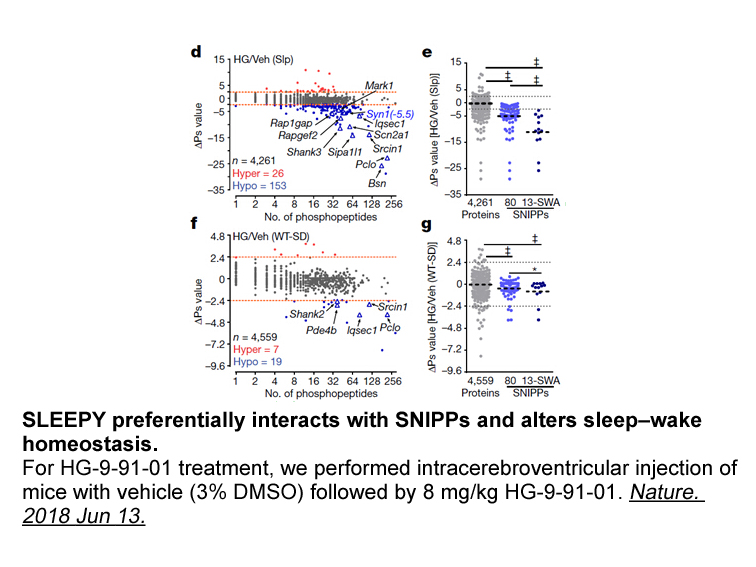Archives
In the mammalian brain synapse formation is followed
In the mammalian brain, synapse formation is followed by a period of synapse refinement, and autophagy has been shown to play an important role in this process. For example, Tang and colleagues found that autophagy is required for the developmental pruning of dendritic spines, and that this pruning is disrupted in individuals with autism spectrum disorder (ASD)[3]. Intriguingly, the authors found a statistically significant increase in phosphorylated mTOR (p-mTOR) in the brains of ASD patients compared to age-matched controls [3]. Since the activation of mTOR inhibits autophagy, an increase in mTOR activity typically indicates a reduction of autophagy [4]. Indeed, ASD patients exhibited significantly lower levels of LC3-II, a marker for autophagosomes, throughout childhood and adolescence [3]. Moreover, Tang et al. observed that mTOR hyperactivation in mice led to ASD-like behaviors and spine pruning deficits in cortical projection neurons, indicating that autophagy is essential for synaptic pruning, and that defects in autophagy contribute to ASD phenotypes [3].
Autophagic cargo at the synapse
Outstanding questions about synaptic autophagy
Given the distinct molecular compositions and features of the juxtaposed pre- and postsynaptic compartments, one important but unresolved question is whether pre and post-synaptic autophagosomes have unique characteristics and/or regulatory mechanisms. A recent study by Maday and colleagues supports this idea, as the authors find that autophagosomes originating in MK0752 of hippocampal neurons exhibit distinct characteristics from those originating in the somatodendritic region [40]. The former appear overwhelmingly ‘mature,’ i.e. positive for the late endosome/lysosome marker LAMP1, once they enter the somatodendritic compartment following their retrograde axonal transport, while the latter are less mature and less mobile overall [40]. These findings suggest that neuronal and/or synaptic compartmentalization creates molecularly distinct pools of autophagosomes that exhibit different dynamic behavior and functional properties. Additional work will be needed to determine whether these autophagosomes are indeed molecularly distinct and/or responsive to compartment-specific regulatory stimuli.
This possibility of distinct spatially and conditionally regulated autophagosomes dovetails with mounting evidence that there are multiple classes of LC3-positive structures. Although LC3 is considered a specific and reliable marker of autophagosomes, it is worth noting that LC3 was first identified in rat neurons as the light chain of microtubule-associated proteins MAP1a and MAP1b, components of the neuronal cytoskeleton [41]. Its role in autophagy was recognized only later by Kabeya and colleagues [42]. In keeping with the potentially versatile role of LC3, Kononenko et al. reported that a subset of LC3-positive structures undergoing retrograde transport from presynaptic terminals exhibited colocalization with the endocytic adaptor AP-2 and with BDNF-activated TrkB receptors, which are traditionally found in signaling endosomes [43]. One interpretation of these data is that presynaptic autophagosomes can merge with signaling endosomes, or that these retrograde cargoes are co-transported. Another possibility is that LC3 associates with multiple vesicle types, including autophagosomes, signaling endosomes, and potentially other structures. Interestingly, it was observed by Waites, Okerlund, and colleagues in the Garner lab that Bassoon/Piccolo DKD boutons, shown to be LC3-immunopositive, contained multiple heterogeneous membrane structures, most of which did not resemble classical autophagosomes [27,28] (Fig. 2). It is also worth noting that the other mammalian Atg8 h omologs, namely GABARAP and GATE-16, likewise exhibit many functions at the synapse, some unrelated to autophagosome formation. GABARAP in particular has been shown to be involved in the trafficking of GABAA receptors to the neuronal plasma membrane [44], and has numerous binding partners that are involved in a diversity of dynamic processes underlying synapse formation, maintenance, and plasticity [45]. Together, these studies indicate how much there still is to learn about protein trafficking and degradative pathways at the synapse, and caution against assuming that ‘traditional’ autophagy markers such as LC3 always represent autophagosomes in highly specialized cell types such as neurons. In the future, it will be important to use the most stringent possible criteria for identifying putative autophagosomes. Techniques like correlative light and electron microscopy, and proteomics-based identification of unique molecular markers for pre- and/or postsynaptic autophagosomes will help to expand our repertoire for characterizing and investigating autophagy at the synapse.
omologs, namely GABARAP and GATE-16, likewise exhibit many functions at the synapse, some unrelated to autophagosome formation. GABARAP in particular has been shown to be involved in the trafficking of GABAA receptors to the neuronal plasma membrane [44], and has numerous binding partners that are involved in a diversity of dynamic processes underlying synapse formation, maintenance, and plasticity [45]. Together, these studies indicate how much there still is to learn about protein trafficking and degradative pathways at the synapse, and caution against assuming that ‘traditional’ autophagy markers such as LC3 always represent autophagosomes in highly specialized cell types such as neurons. In the future, it will be important to use the most stringent possible criteria for identifying putative autophagosomes. Techniques like correlative light and electron microscopy, and proteomics-based identification of unique molecular markers for pre- and/or postsynaptic autophagosomes will help to expand our repertoire for characterizing and investigating autophagy at the synapse.